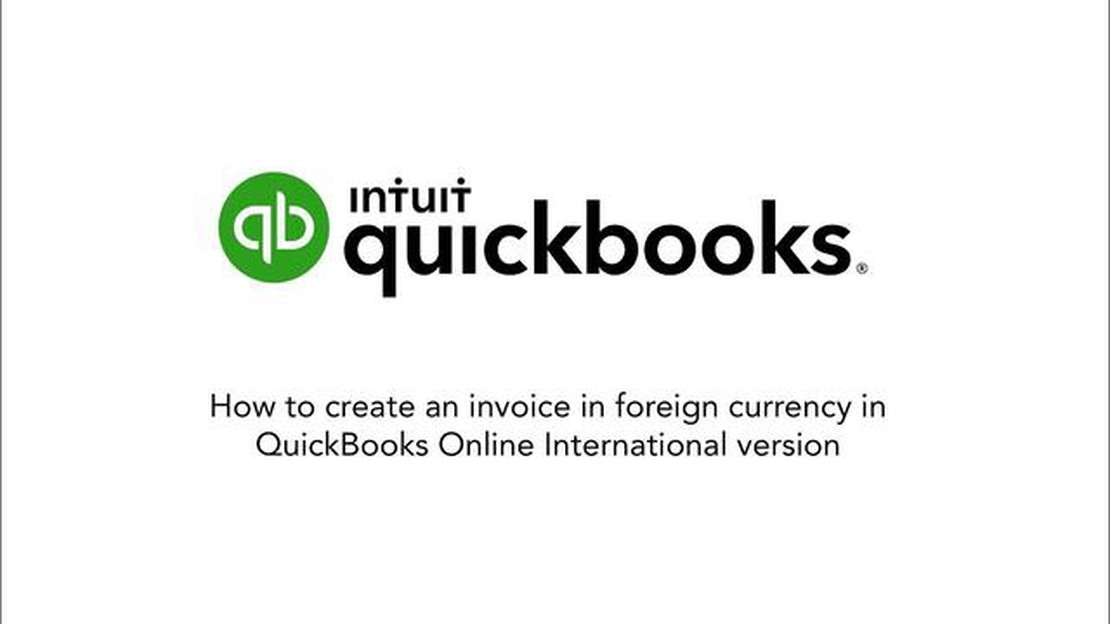Understanding CBM Reference Rate: Everything You Need to Know
Understanding CBM Reference Rate and its Importance The CBM Reference Rate is a crucial financial benchmark that serves as a reference point for …
Read Article
If your business operates globally, you may come across the need to pay invoices in foreign currency. It can be a daunting task, especially if it’s your first time dealing with international payments. However, with the right knowledge and guidance, the process can be simplified and hassle-free.
In this comprehensive step-by-step guide, we will walk you through the process of paying an invoice in a foreign currency, from understanding the exchange rate to choosing a reliable payment method.
Step 1: Understand the Exchange Rate
The first and most important step when paying an invoice in a foreign currency is to understand the exchange rate. The exchange rate determines the value of one currency in relation to another and can greatly affect the amount you will pay.
Step 2: Choose a Suitable Payment Method
There are various payment methods available for international transactions, each with its advantages and disadvantages. It’s crucial to choose a method that is secure, cost-effective, and convenient for both parties involved.
Step 3: Verify the Invoice Details
Before making the payment, it is important to verify the accuracy of the invoice details. Check the recipient’s information, the amount due, and any additional charges or instructions. This will ensure that the payment is made to the correct recipient and for the correct amount.
Step 4: Initiate the Payment
Once you have chosen the payment method and verified the invoice details, it’s time to initiate the payment. Follow the instructions provided by your chosen payment provider to transfer the funds securely and efficiently.
Step 5: Keep Track of the Payment
Read Also: Understanding the Variable Moving Average in Metastock: A Comprehensive Guide
After making the payment, it is essential to keep track of the transaction. Save copies of any confirmation emails or receipts, and regularly check your bank statements to ensure the payment has been successfully processed.
Step 6: Maintain Records for Reconciliation
To ensure proper accounting and reconciliation, it is recommended to maintain records of all foreign currency payments. This includes copies of invoices, receipts, and any relevant correspondence.
By following these steps, you can confidently navigate the process of paying an invoice in a foreign currency. With proper planning and attention to detail, you can streamline your international payment processes and avoid any potential pitfalls along the way.
Once you have received an invoice in foreign currency, it’s time to choose the payment method that suits you best. There are several options available depending on your preferences and the ease of transaction.
Here are some common payment methods to consider:
Read Also: Does Trailing Stop Work in Forex? 2021 Guide
Before choosing a payment method, consider factors like convenience, fees, security, exchange rates, and the availability of the chosen method in both your country and the recipient’s country.
Make sure to double-check the payment details provided by the invoice issuer to ensure accuracy and prevent any payment delays or errors.
Before paying an invoice in foreign currency, it is essential to check the exchange rates. Exchange rates fluctuate daily and can significantly impact the amount you will need to pay. Here are the steps to check the current exchange rates:
By checking the exchange rates beforehand, you can ensure that you have the correct amount of money and avoid any surprises when paying the invoice.
Yes, you can pay an invoice in a foreign currency. Many businesses accept payments in different currencies to accommodate international transactions.
To pay an invoice in a foreign currency, you can use various payment methods such as wire transfer, credit card, or online payment platforms. The exact process may vary depending on the payment method and the payment platform or bank you are using.
There may be fees associated with paying an invoice in a foreign currency. Banks and payment platforms often charge conversion fees or foreign transaction fees, which can vary depending on the provider and the amount being transferred.
You can find out the current exchange rate for a foreign currency by checking financial websites, using currency converter apps, or contacting your bank or payment platform. These sources will provide you with the most accurate and up-to-date exchange rates.
It is not usually possible to negotiate the exchange rate when paying an invoice in a foreign currency. The exchange rate is usually determined by the bank or payment platform and is based on the current market rates.
Understanding CBM Reference Rate and its Importance The CBM Reference Rate is a crucial financial benchmark that serves as a reference point for …
Read ArticleHow to Exercise Stock Options If you hold stock options as part of your compensation package, it’s important to understand how to exercise them and …
Read ArticleWhat is the Best Indicator to Filter Out Choppy Markets? Choppy markets can be frustrating for traders, as they lack clear trends and can result in …
Read ArticleWhat is Forex Fury? When it comes to trading in the forex market, having a reliable and profitable expert advisor can make all the difference. One …
Read ArticleCan Free to Play (F2P) players trade in Team Fortress 2 (TF2)? In the world of Team Fortress 2, trading plays a crucial role in the game’s economy. It …
Read ArticleWhat can I buy with 1000 won in South Korea? South Korea might be known for its high-tech gadgets and luxurious shopping malls, but that doesn’t mean …
Read Article